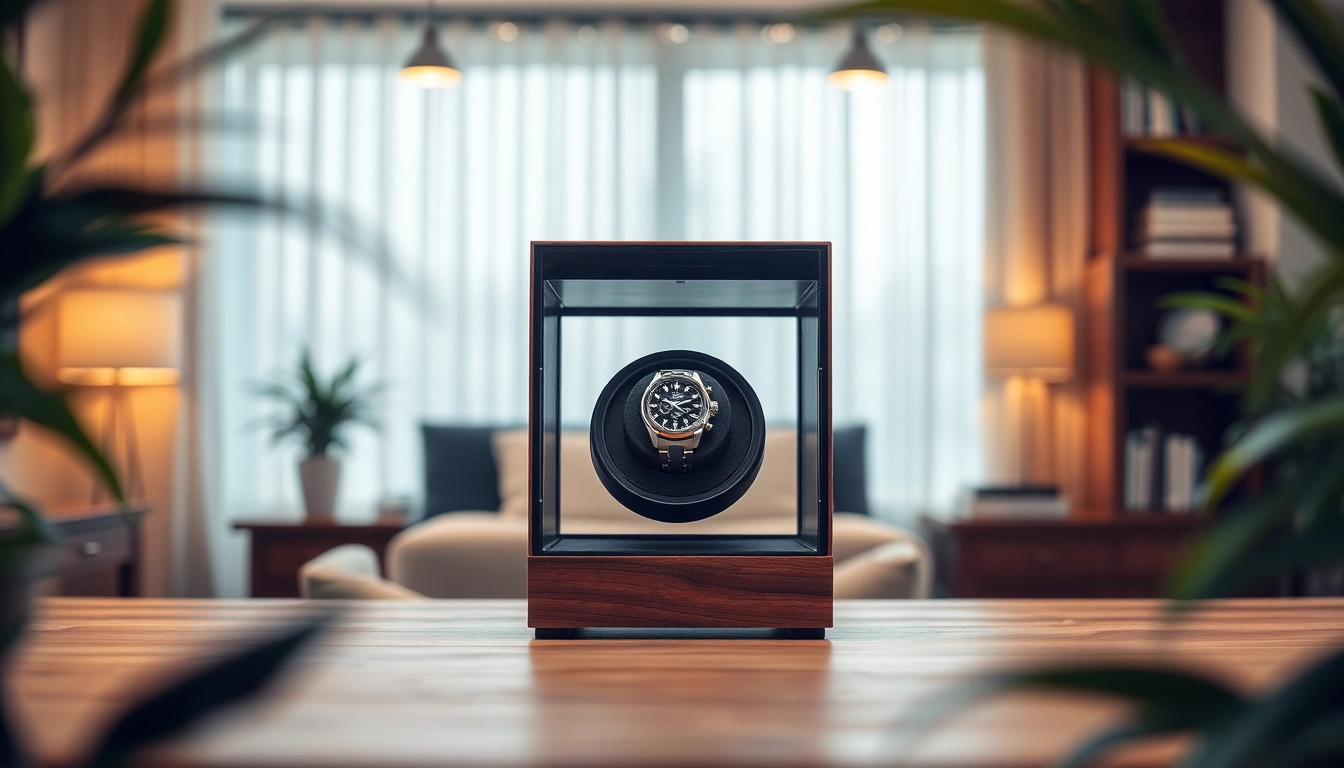Understanding the Watch Winder
What is a Watch Winder?
A watch winder is a mechanical device designed to keep automatic watches wound when they are not being worn. These intricate instruments gently rotate the watch, mimicking the natural motion of a wrist during daily activities. This is particularly important for automatic watches, which rely on motion to wind their mainspring and keep the time and other complications functioning accurately.
How Does a Watch Winder Work?
Watch winders operate through a system of gears and motors, which rotate the watch in a specific motion to keep the mainspring taut. The mechanism typically simulates various wrist movements, allowing the watch to maintain its power reserve while in storage. Most modern watch winders offer adjustable settings for turns per day (TPD), ensuring compatibility with different watch brands and models. The number of rotations is a critical factor, as different watches have varying requirements for optimal operation.
Benefits of Using a Watch Winder
Utilizing a watch winder has several benefits, especially for enthusiasts who own multiple automatic watches. Firstly, it saves time, as owners won’t need to reset the watch after it has stopped. Secondly, maintaining the lubricants in the movement fluid helps prevent uneven wear over time, enhancing the longevity and performance of the watch. Finally, watch winders provide a secure and stylish storage solution while displaying the timepieces beautifully. Investing in a quality watch winder ensures your prized possessions are always ready to wear.
Types of Watch Winders
Single Watch Winder Options
For watch collectors with a singular focus on a specific timepiece, single watch winders are an excellent choice. These compact units take minimal space and are often highly portable. They cater to various designs and motor mechanisms, providing specialized care for each individual watch.
Double and Multi-Watch Winders
Double and multi-watch winders are tailored for collectors with multiple automatic watches. These units can accommodate two, four, or even more watches simultaneously. When selecting one of these winders, ensure that the mechanisms allow for independent settings for each watch, allowing customization for TPD settings as needed for different models in your collection.
Customizing Your Watch Winder
Many modern watch winders allow for customization of settings, accommodating the unique characteristics of various watch brands. This is crucial, as some watches may require specific rotational patterns or TPD settings. Custom features can include damping systems to minimize noise and different casing designs to suit the owner’s aesthetic preferences.
Choosing the Right Features
Motor Types: Which is Best?
Watch winders are typically powered by one of two motor types: geared motors or silent motors. Geared motors are more traditional and are known for their reliability, although they may produce some noise. Silent motors, often used in premium models, are quieter and enable the watch winder to be used in bedrooms or offices without disturbance. Evaluating your preferences and the importance of noise levels can guide your choice here.
Noise Levels: Importance of Quiet Operation
The sound produced by a watch winder can significantly impact where you place the unit. If you plan to use it in a quiet environment, such as a bedroom, opting for a model specifically designed for minimal noise is wise. Many manufacturers offer noise ratings for their products, allowing you to choose a model that fits your noise tolerance.
Design Choices and Aesthetics
Watch winders come in a myriad of designs, materials, and finishes to match personal tastes and home decor. From luxurious wood finishes to modern acrylic designs, there’s a style that will complement any collection. A well-designed watch winder not only serves a functional purpose but also acts as an elegant display case for your timepieces.
Setting Up Your Watch Winder
Optimal Placement for Durability
Placement of the watch winder is crucial for both its operation and longevity. The unit should be placed on a stable surface away from direct sunlight and moisture. Ideally, it should be in an area that doesn’t experience considerable temperature fluctuations, as extreme heat or cold can affect the lubricants within mechanical watches.
Adjusting Settings for Different Watches
When setting up your watch winder, familiarize yourself with the settings for the specific models you are using. Many winders allow for independent programming, letting you adjust TPD and directional settings (clockwise, counterclockwise, or both) to suit each watch’s requirements. Ensuring that these settings are correctly configured will maximize the benefits of using your watch winder.
Regular Maintenance Tips
To keep your watch winder functioning optimally, it requires regular maintenance. Clean the external casing with a soft cloth to prevent dust build-up. Periodically check the motor and wiring to ensure they are functioning correctly and make sure the watch holders are clean and free from any debris that could scratch the watch. Regular checks of the settings will help confirm that they continue to meet the needs of your watches.
Frequently Asked Questions
Do All Automatic Watches Need a Watch Winder?
While not all automatic watches require a watch winder, many owners find that having one enhances their experience. Watches with complex movements and multiple complications benefit from being kept in a constant state of movement, ensuring accuracy. However, if you wear a watch consistently enough, or simply prefer to wind it manually, a watch winder may be unnecessary.
How to Select the Best Watch Winder for Your Needs
Choosing the best watch winder involves considering the number of watches you own, their winding requirements, and your aesthetic preferences. Look for a model with adjustable settings to cater to different watches in your collection. Additionally, consider the motor type and noise levels based on where you plan to use the watch winder.
Common Mistakes to Avoid When Using a Watch Winder
One common mistake is failing to set the correct TPD settings for each watch. This can lead to over-winding or under-winding, which may impact the overall function of your timepieces. Another misstep is neglecting regular maintenance and checks, which can result in damage over time. Lastly, placing the winder in inappropriate environments can affect performance and longevity.



